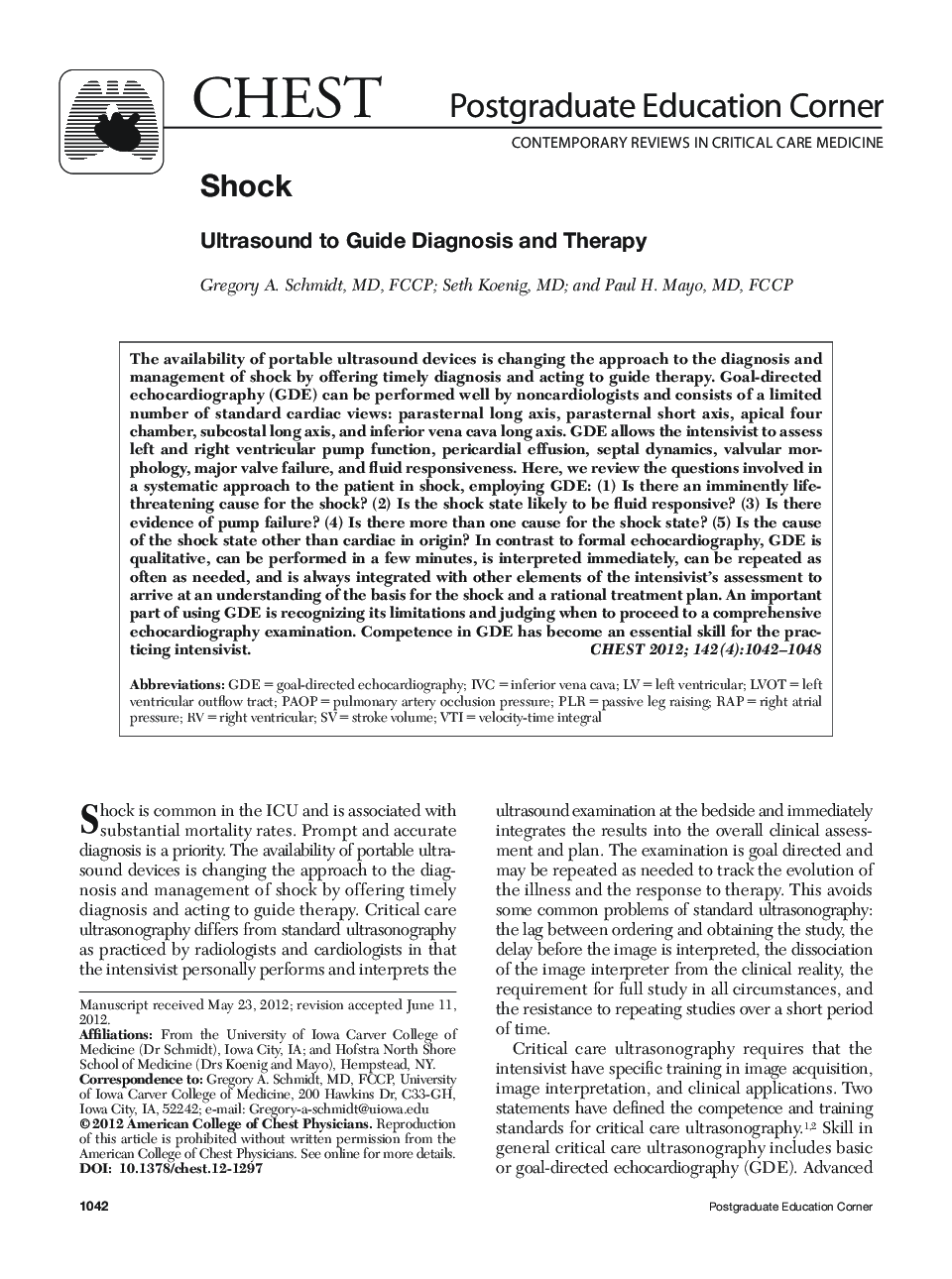| کد مقاله | کد نشریه | سال انتشار | مقاله انگلیسی | نسخه تمام متن |
|---|---|---|---|---|
| 2901714 | 1173356 | 2012 | 7 صفحه PDF | دانلود رایگان |

The availability of portable ultrasound devices is changing the approach to the diagnosis and management of shock by offering timely diagnosis and acting to guide therapy. Goal-directed echocardiography (GDE) can be performed well by noncardiologists and consists of a limited number of standard cardiac views: parasternal long axis, parasternal short axis, apical four chamber, subcostal long axis, and inferior vena cava long axis. GDE allows the intensivist to assess left and right ventricular pump function, pericardial effusion, septal dynamics, valvular morphology, major valve failure, and fluid responsiveness. Here, we review the questions involved in a systematic approach to the patient in shock, employing GDE: (1) Is there an imminently life-threatening cause for the shock? (2) Is the shock state likely to be fluid responsive? (3) Is there evidence of pump failure? (4) Is there more than one cause for the shock state? (5) Is the cause of the shock state other than cardiac in origin? In contrast to formal echocardiography, GDE is qualitative, can be performed in a few minutes, is interpreted immediately, can be repeated as often as needed, and is always integrated with other elements of the intensivist's assessment to arrive at an understanding of the basis for the shock and a rational treatment plan. An important part of using GDE is recognizing its limitations and judging when to proceed to a comprehensive echocardiography examination. Competence in GDE has become an essential skill for the practicing intensivist.
Journal: Chest - Volume 142, Issue 4, October 2012, Pages 1042–1048